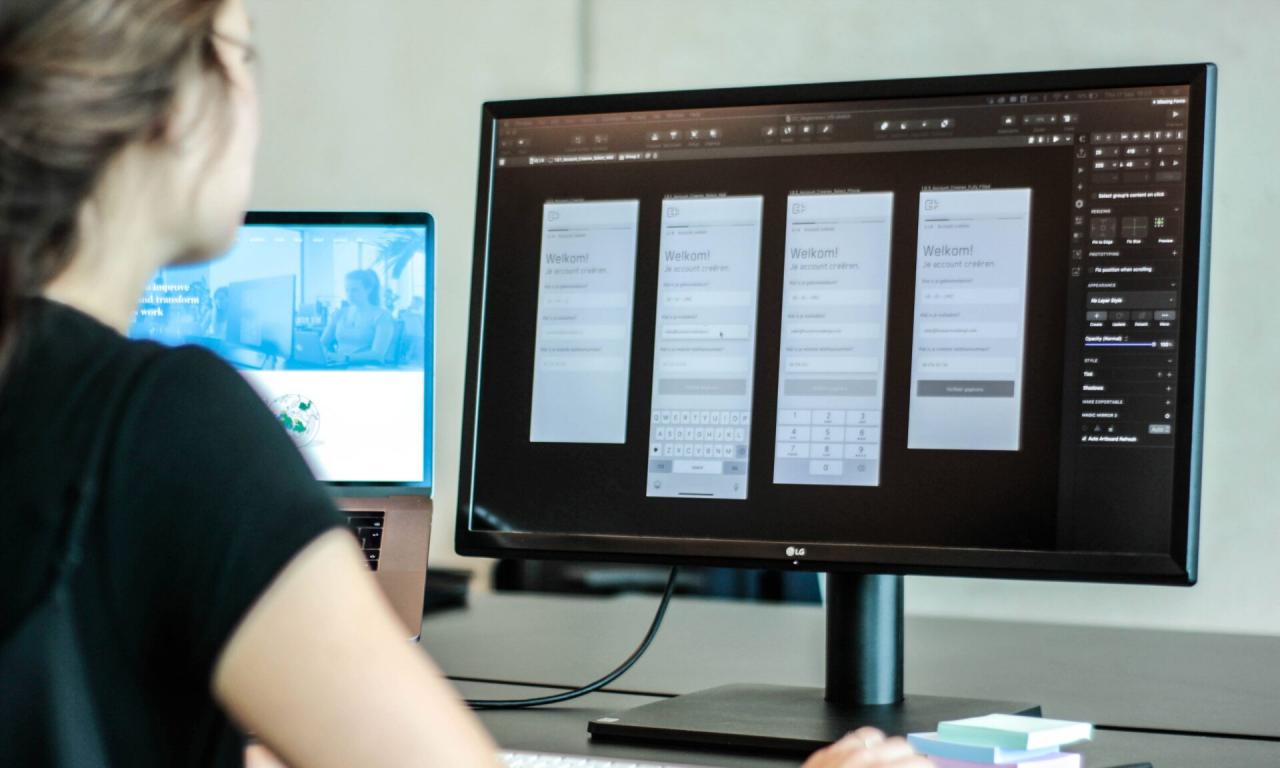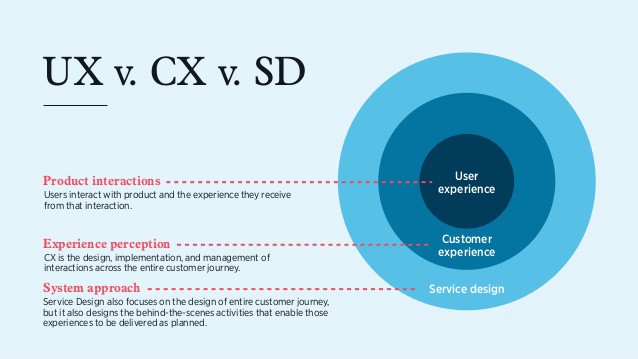The site UXmatters, which covers the theory and practice of user experience design (User eXperience, UX), publishes a monthly editorial with answers from leading experts in the field of UX-design to questions from visitors of this information portal.
In the November article, experts answered the following question:
What are the basic principles of designing a positive user experience?
In search of an answer, it will be necessary to consider basic design concepts – not only those directly related to UX design, but also the principles of design in general. Why?
Pabini Gabriel-Petit, publisher and editor-in-chief of UXmatters, states:
“It’s always important for designers working in the ever-changing field of user experience to consider fundamental design principles.
The nature of a designer’s work is constantly changing, depending on the evolution of the technology used or the context of the task at hand. These changes are present at all levels, from developing web applications for personal use to designing the user experience as a human interacts with a multichannel media environment.
When a designer is faced with challenges he or she has not faced before, it is knowledge of fundamental design principles that provides a solid foundation for developing innovative solutions.

For example, in recent years we have seen such new IT trends as cloud computing, the widest spread of mobile devices, big data technologies, the further evolution of the Internet, and the mass transition of users from desktop to laptop computers.
All these trends require designers to reconsider existing approaches to design and come up with new models of human interaction with the digital environment and new standards for web design.
Visual design trends are changing-sometimes for the better, sometimes not. In the recent past, the prevailing trend was the use of small, light gray fonts. For two reasons – too small and low contrast – the bulk of web content was poorly readable, and the design situation could be described as “a serious visual deficit.
Now we see large fonts everywhere – the problem of low legibility is a thing of the past with the era of flat design. Aesthetically, flat design in most cases, pleasing to the eye, but it is also able to confuse the user if the background of the text box on the Web page is difficult to distinguish from a large flat rectangular button.
A clickable button (CTA element) increases the degree of interaction with the web interface. So, it needs to be differentiated from the other elements of the page by adding at least 1 pixel of conditional volume to it, that is, using one of the basic principles of visual design.
By paying attention to “human-centered” design principles, UX designers can avoid making ill-conceived decisions at every level – from developing a template for a landing page to creating a user experience model.
What are the fundamentals of design?
“It’s a question as comprehensive as “What are the fundamentals of medicine or engineering?” notes Jordan Julien, an independent user experience optimization consultant.
User experience designers’ answers to the above question vary widely, but for himself, Jordan identifies some key foundational principles of UX design
Contextuality – There’s a common notion of the “user journey” (marketers call this conventional trajectory “going through the conversion funnel”) as a collection of stories.
If you open a book at random on any page and select any word, you’ll notice that its specific meaning on that page is determined by the context, that is, the overall meaning of the sentence, paragraph, page.

In the book example, you usually know the title of the book and the chapter and the page number, which easily allows you to understand in what context the word is used within some logically complete phrase or passage of narrative.
So, you need to make sure that users have an understanding of the context of the conversion action they are taking: not just “clicking the CTA button”, but specifically that they are “signing up for the standard package of services”.
Humanity – accessibility, reliability and transparency of interaction. Interaction should be done in such a way that the user understands that they are communicating with another person, not a machine.
Findability – ease of discovery of the proposed conversion action. Provide a strong “informational flavor” to the CTA element by highlighting the call to action with prominent pointers.
Ease of interaction – reduce the cognitive load on the user whenever possible. Be consistent and logical. Build a strong visual hierarchy that tells the visitor the goal and how to do the conversion.
Ease of interaction – achieve a high signal-to-noise ratio. Eliminate distractions, get rid of obscure jargon, reduce the loading time of the landing page/site.
Leo Frishberg, senior product design manager (Intel Corporation), answers the question as follows:
“I believe there are general design principles whose application has far-reaching implications.
Some of these principles may be more important to UX designers or information architecture developers, while others are more important to usability and user research specialists.”
For Leo himself, the fundamentals of good design boil down to a return to the 3 principles of architectural design articulated by the ancient Roman architect Vitruvius:
- Venustas – Beauty, or Delight;
- Firmitas – firmness, stability (Firmness, or Soundness);
- Utilitas, usefulness, convenience (Utility, or Commodity).
It is quite possible to correlate these three principles with a widespread model of UX development, designated by the acronym BTU:
- Business – Convenience (Commodity);
- Technology – sustainability (Soundness);
- User – user (Delight).
“By applying the architectural principles of Vitruvius to user experience design, you can get designs so exquisite that you’ll spend the least amount of resources to achieve maximum results. World-class UX design relies on world-class system design that integrates technology and the people who benefit from it,” assures Leo.

Eryk Pastwa, mobile UI designer and vice president of design at Creatix, a networking company, reminds us of seemingly proverbial truths, the value of which, however, is not diminished by their repetition:
“Focus on user needs, make them the center of your design process. It sounds like a cliché, but it’s exactly what you need to know about user experience design.
In practice, this means that designers need to understand: every user’s point of view is unique. You have to be empathetic and be able to go as far beyond your usual perceptions as you can to understand other people’s perspectives.
How is great design made?
“This is a very difficult question to answer correctly,” says Peter Hornsby, head of Web and UX design at Royal London, UK.
Great design comes from the interaction of many factors, few of which a designer can control personally. The outcome depends not only on the talent of the designer, but also on the effective management of the design process and the efforts of others involved in the process.
For example, the designer should understand the client’s goals and the way he or she will achieve them – the marketer should help the designer here, and the designer can use the advice of the web developers to determine the strengths and weaknesses of the underlying technology. The project manager needs to know when and who to delegate tasks to and how to exchange ideas within the team working on the project.
Here are a couple of helpful tips from Peter Hornsby:
“Probably the hardest part is accepting as a given that sometimes you can’t execute the best design you’re capable of. You just make the best design that fits the context in which you’re working on a particular assignment.
Design is a very personal thing. What doesn’t work for you might work great for me. I always try to take time out to think about what I’m doing to solve a problem, what other designers have done in similar cases, and about what both stakeholders – not just potential users but also design customers – want.
You can learn from both successes and failures, but that will only happen if you take the time to think about why some solutions work and others don’t.”
“Layers” of high-end UX design
Jim Nieters, head of UX at HP Consumer Travel Division, reveals his secret to designing a superior user experience
“Use metrics to make your designs succeed. I always pay attention to 5 factors that determine whether a web resource or digital product will meet the needs of users. These are the metrics that UX design can and should influence.”
According to Jim’s methodology, to highlight the fundamentals of good user experience design, one must “look at several layers of interface interaction that open up to the observer sequentially as when peeling an onion.”
At the first level, good UX design is defined as “simple and pleasant for users. It makes it easy to perform all the necessary tasks, moving visitors in the right direction, i.e. from the entrance to the exit of the conversion funnel.

But a well-designed design doesn’t just please users – it also successfully converts and monetizes targeted traffic. To verify the quality of your design, you can apply quantitative metrics to show that your design is successful.
For a product landing page or eCommerce site, user success can be determined by statistics from different points in the conversion funnel – from click-through-rate (CTR) and conversion to leads to the number of closed deals and ROI.
In addition, 5 qualitative factors can be identified that determine whether a digital product meets user requirements:
- Discoverability – can users understand at a glance how to complete a conversion task on a landing page/site?
- Learnability – Are users able to understand the model of interaction with the web interface and predict how to move from one part of the resource/product to another? Will they remember on repeat visits what they need to do to achieve conversion goals?
- Efficiency – Once users become repeat users, will they be able to complete repetitive tasks quickly and easily?
- System performance – how quickly does the interface respond to user actions (button clicks, link clicks, other interactions)?
- Enjoyment – is it pleasant to use your product? If the answer to this question is positive, then there is a high probability that users via “word of mouth” will share opinions about their successful user experience.
Recall this: the vast majority of well-designed products come from user-centered design (UCD) techniques.
The design process begins with user-centered research that identifies key tasks, interaction problems, and emotional triggers. Based on the results of this research, UX designers begin their part of the project, trying to ensure that the digital product is both easy to use and meets the emotional needs of the target audience.
Finally, usability specialists test the design through usability testing or evaluation studies. This approach is highly likely to produce useful products with a good degree of usability.
However, while usability is an absolutely necessary component of a landing page/site, it is not enough to call the design good: it must be remembered that visual appeal and usability are the tools to convey a clear marketing message and a unique selling proposition to the target market.

In lieu of a conclusion: the essence of UX design
Josephine Wong, co-founder of marketing agency Usability Asia Ltd, defines the essence of a well-designed user experience this way:
- it introduces the user to a business that understands the potential customer’s needs and is able to meet them;
- creates a map of existing marketing strategy gaps;
- connects the visitor to digital sources of information about the product or service;
- Uses a well-defined and clear design structure that scales well and promotes a continuous and convenient customer-business interaction;
- Uses design layouts that promote useful, convenient and enjoyable interactions with the digital product;
- Establishes specific design principles consistent with the brand’s principles and business objectives;
- Continuously improves, using feedback from both sides of the commercial interaction – both the target audience and the business;
- takes structured and balanced criticism as a source of ideas for further optimization.
So, in this article we have presented you with the basic principles of designing a positive user experience. Clearly, a topic as vast as usability cannot be closed with a couple of dozen blog posts, so “continuation follows.”
